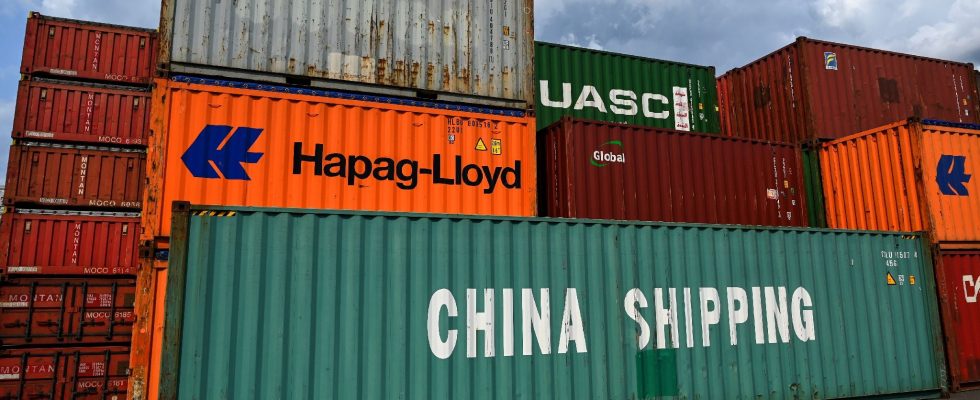What do a Yemeni rebel and Donald Trump have in common? Each in its own way casts a shadow over international trade. Trade has already weakened in recent months. In 2023, they only increased by 0.8%, according to the World Trade Organization (WTO), after two years of strong rebound linked to the euphoria of the post-Covid recovery. Thus, unusually, their variation turned out to be lower than the growth of global GDP, of 3% last year, according to the IMF. Geopolitical tensions, in addition to increases in interest rates and the slowdown of the Chinese economy, are not unrelated to this sluggishness. They have not finished disrupting the commercial game.
Suez and Panama, two blocked canals
For the moment, the WTO anticipates an acceleration in traded volumes, to the tune of 3% in 2024. In the longer term, analysts from the Boston Consulting Group (BCG) see them growing by more than 30%, in value, on the decade 2022-2032. Will these hypotheses hold water, given that for several months, Houthi attacks in the Red Sea have been hampering goods traffic? To shuttle between Asia and Europe, many container ships prefer to extend their itinerary by several weeks by diverting towards the Cape of Good Hope rather than passing through the Suez Canal.
“Other crossroads are blocked, reports Julien Marcilly, chief economist of Global Sovereign Advisory, such as the Panama Canal, this time due to drought. The China Sea is also worth monitoring, with growing tensions between the Philippines and the China. But 40% of the maritime trade of China and Japan passes through this sea route.” So many points of friction that can encourage economic players to rethink their supply chain. “Since the pandemic, there has been a lot of talk about new trends: relocations, neighboring partnerships… In fact, this is not really true,” adds the economist. What is clear is that trade routes are lengthening, particularly to circumvent protectionist measures and sanctions.”
Towards a return of American protectionism?
A recent United Nations study demonstrated that the “nearshoring” – the choice of geographically neighboring partners – was not progressing. On the other hand, the “friendshoring” (“relocation to friends”) is always popular. This trade between friends favors relations with countries of trust, close politically and culturally, this proximity being measured in particular by the votes of States at the UN. The partnership established by Europe with Canada to secure its supplies of critical raw materials is an illustration of this. However, if friendly countries are favored, it is at the cost of less diversification. Everyone then becomes more vulnerable to possible political shifts from their allies, a key point in this “super election year”.
The return of Donald Trump to the White House would undoubtedly revive the protectionist spirit in the United States. “If we put it simply, the strategy until Barack Obama consisted of promoting trade with China with the aim of weakening Beijing’s power,” explains Julien Marcilly. The process had worked with the USSR, it did not not worked this time: China’s enrichment has not gone hand in hand with political opening.” Arriving at the helm in 2017, Donald Trump adopted a more radical posture, with the implementation of customs duties… which Joe Biden did not remove. White hat and white hat? Nikolaus Lang, senior partner of BCG, considers that “the impact of the American elections on international trade should be more measured than certain analyzes estimate. Whatever the outcome, it would be illusory to anticipate a paradigm shift.”
Moreover, the industrial policy of the Democratic president, with the Inflation Reduction Act (IRA) and the control of chip imports through the Chips Act, also gave pride of place to national interests. “Donald Trump’s approach is more focused on confrontation, including with Europe, underlines Ruben Nizard, head of social and political risk analysis at Coface. He has often proclaimed his opposition to the IRA but the Most of the provisions being supported by the private sector, I can’t see him going back on them.” Nikolaus Lang agrees: “The IRA, which has provided jobs in the electric automobile sector, will probably be maintained in its broad outlines.”
Double-edged customs barriers
On the commercial side, Donald Trump has already shown the color: to promote made in America, it envisages a uniform increase of 10% in customs tariffs on all imported products. The measure offends the Republican-leaning American Action Forum think tank, which judges that it “would distort global trade, discourage economic activity and have largely negative consequences on the American economy.” All of the United States’ trading partners, regardless of their political regime or their relations with Washington, are threatened. There are no more friends who last.
Drawing on the experience of his first term, Trump wants to drive the point home. “Customs barriers have led to a reduction in American imports of Chinese products since the beginning of 2018. Mexico even became the leading supplier to the United States in mid-2023,” specifies Ruben Nizard. The Coface expert notes, however, that Chinese exports to Mexico, but also to Vietnam, have considerably increased in value, of around 75%, between 2018 and 2022. At the same time, “all “Chinese exports have increased to a lesser extent. This is a sign that China is going through these third countries to ultimately access the American market.” Sleight of hand fools no one.
If it excites, during meetings, the patriotic feeling of his fans, this aspect of Donald Trump’s program also risks making a collateral victim: the American consumer. Raising the prices of imports would, in fact, strain purchasing power. Unless growth, more robust than in Europe since the end of the Covid crisis, continues, thus allowing households to cushion the shock. A paradox that the Democratic camp would have done without: Biden’s flattering economic record and the optimistic outlook for 2024 ultimately give credence to Trump’s proposal.
.
